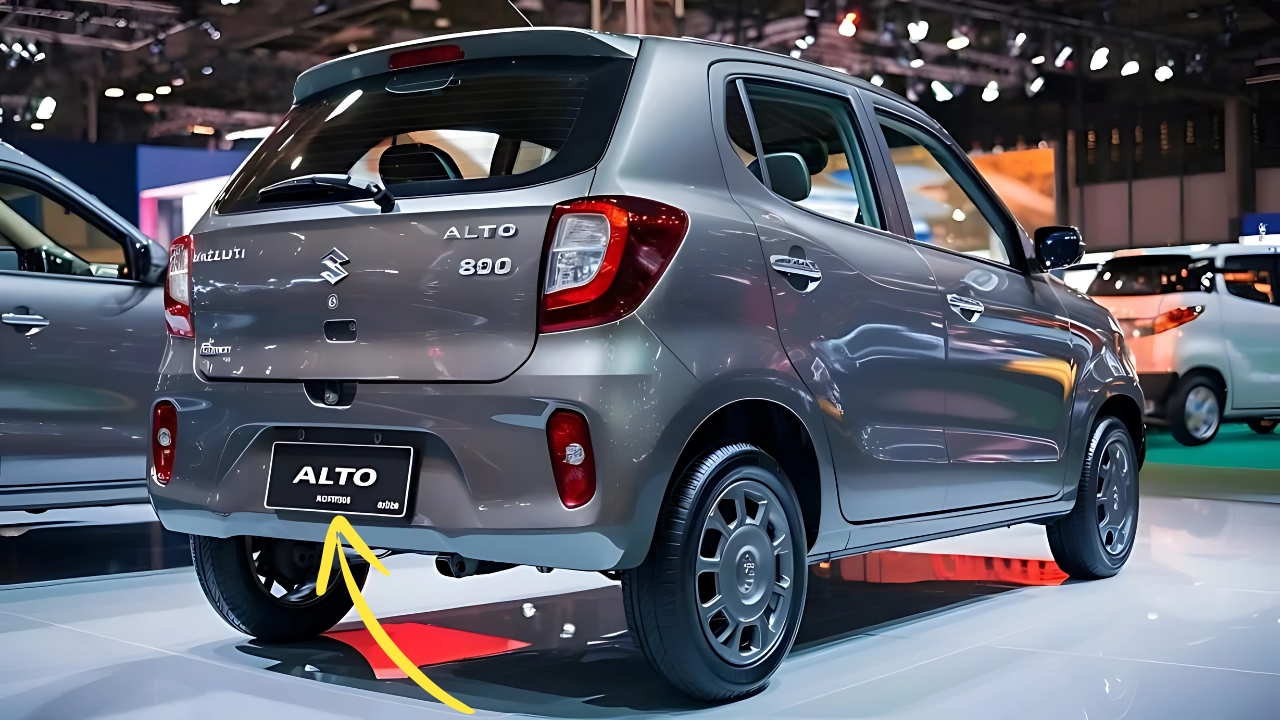Maruti Alto 800: Few vehicles have shaped India’s automotive landscape quite like the Maruti Alto 800. For over two decades, this unassuming hatchback has served as the entry point to four-wheeled mobility for countless families, establishing itself as not merely a car but a cultural institution.
The Alto’s journey reflects India’s evolving relationship with personal transportation – from aspirational luxury to practical necessity.
Having recently spent several weeks with the latest iteration during a return visit to my hometown in central India, I’ve gained fresh perspective on why this modest vehicle continues to resonate in an increasingly sophisticated marketplace.
Maruti Alto 800: Historical Context: Understanding the Legacy
To appreciate the Alto 800’s significance, one must first understand its lineage Introduced as the successor to the iconic Maruti 800 in 2000, the Alto inherited the mantle of India’s most accessible four-wheeler – a position of tremendous responsibility in a rapidly motorizing nation.
Through multiple generations and refreshes, the fundamental proposition has remained consistent: reliable, economical transportation with minimal complexity and maximum accessibility.
The statistical evidence of the Alto’s impact is staggering. For twelve consecutive years (2004-2015), it held the title of India’s best-selling car, with cumulative sales exceeding 4.3 million units – numbers that transcend mere commercial success to become cultural phenomenon.
In many parts of India, “Alto” remains synonymous with “car” itself, much as “Colgate” represents toothpaste or “Xerox” photocopying in the collective lexicon.
Design Philosophy: Pragmatic Minimalism
The Alto 800’s exterior design embraces a philosophy best described as pragmatic minimalism.
The current generation, introduced in 2022, maintains compact dimensions (3445mm length, 1475mm width, 1475mm height) that prove invaluable when navigating congested urban environments.
During my time with the vehicle, this compact footprint transformed seemingly impossible parking situations into manageable exercises, particularly in the labyrinthine marketplaces of older city districts.
Styling elements remain restrained yet contemporary, with a modestly sized grille flanked by simple halogen headlamps.
The body-colored bumpers and door handles on higher trims (my test vehicle was the VXI variant) create visual cohesion, while the gently sculpted side panels add just enough character to avoid aesthetic blandness without introducing unnecessary complexity or maintenance concerns.
Perhaps most telling is what the design lacks – there are no superfluous creases, no attempt at sporty pretensions, no chrome embellishments beyond the essential badging.
This honesty of purpose communicates the vehicle’s fundamental mission without apology or distraction.
Interior Experience: Thoughtful Austerity
Step inside the Alto 800, and the philosophy of thoughtful austerity continues. The dashboard layout prioritizes function over form, with clearly marked controls positioned within easy reach.
The dual-tone gray and beige color scheme in my test vehicle creates a sense of space that belies the modest dimensions, while the textured plastic surfaces, though obviously economical, demonstrate attention to detail in their grain patterns and consistent panel gaps.
Seating comfort exceeds expectations given the price positioning. The front seats provide adequate support for shorter journeys, with sufficient adjustment range to accommodate varying physiques.
Rear accommodation proves suitable for two adults of average height, though three would find themselves in extremely close quarters.
During a four-hour journey with my elderly parents, I heard no complaints about comfort – genuine praise considering my father’s usual forthright critiques of automotive ergonomics.
Storage solutions demonstrate practical consideration of real-world usage. The front door pockets easily accommodate 1-liter water bottles, while the dual glovebox arrangement provides welcome separation between documents and other items.
The 177-liter boot, though modest by modern standards, swallowed our weekend luggage with careful packing, and the split-folding rear seat in higher variants adds meaningful versatility.
Technology integration remains deliberately minimal yet sufficient. The basic digital readout provides essential information without distraction, while the simple two-speaker audio system delivers adequate sound quality for news and music reproduction.
The absence of a touchscreen in my test vehicle felt refreshingly appropriate rather than deficient – a reminder that driving need not always involve digital immersion.
Driving Dynamics: Urban Appropriateness
Powered by a 796cc three-cylinder petrol engine producing 47 horsepower and 69 Nm of torque, the Alto 800 makes no pretense of sportiness.
Yet this modest output proves entirely adequate within its intended environment.
During city driving, the light clutch and precise five-speed manual gearbox create an unexpectedly engaging experience, with the engine’s eager character encouraging full use of the rev range when conditions permit.
Highway journeys require more patience and planning. Maintaining 80-90 km/h cruising speeds poses no challenge on level roads, but steeper inclines necessitate downshifting and momentum management.
This limitation feels less like a deficiency and more like an honest reflection of the vehicle’s urban-focused design – like asking a comfortable pair of walking shoes to perform in a marathon.
The suspension tuning demonstrates similar contextual appropriateness. The soft setup absorbs urban road imperfections with surprising composure, transforming potholed streets into manageable terrain.
Higher-speed stability remains adequate within reasonable expectations, though crosswinds and passing trucks can create momentary disturbances that require attentive correction.
Perhaps most impressive is the steering character – light enough for easy maneuverability in tight spaces yet with sufficient feedback to place the car precisely at higher speeds.
The 4.6-meter turning radius transforms three-point turns into simple U-turns, a seemingly minor specification that translates to meaningful daily convenience.
Efficiency Economics: The Ownership Equation
The Alto 800’s economy extends far beyond purchase price. During my testing period, which included a mix of congested urban driving and open highway stretches, the vehicle consistently delivered 22-23 km/l (approximately 52-54 mpg) – figures that translate to genuine financial impact for budget-conscious owners.
Maintenance economics prove equally compelling. Service intervals of 10,000 kilometers strike a reasonable balance between maintenance needs and owner convenience, while the widespread availability of parts and service expertise ensures reasonable costs and minimal downtime.
The simplicity of the mechanical package reduces potential failure points, while the extensive production volume creates economies of scale that benefit the replacement parts ecosystem.
Insurance costs reflect the modest value and straightforward repairability, while the vehicle’s light weight (approximately 755 kg) contributes to reduced tire wear compared to heavier alternatives.
These seemingly minor considerations compound into significant total cost of ownership advantages over a typical ownership cycle.
Cultural Significance: Beyond Transportation
What statistics and specifications cannot capture is the Alto 800’s profound cultural significance.
For countless Indian families, this vehicle represents not merely transportation but transformational milestone – often the first four-wheeled purchase after years of two-wheeler ownership, symbolizing upward mobility and enhanced safety for family transport.
During my journey through smaller towns and villages, I observed countless Alto 800s serving multiple roles beyond basic transportation – from makeshift delivery vehicles with rear seats removed to mobile shops during weekly markets, from wedding cars adorned with marigold garlands to essential transportation for small businesses.
This adaptability to diverse needs speaks to the fundamental correctness of the core design.
Perhaps most telling was a conversation with a local mechanic who services everything from motorcycles to luxury SUVs.
When asked which vehicle he would recommend to someone buying their first car, his answer came without hesitation: “Alto.
No question.” His reasoning transcended mere economics – “It teaches good habits without punishing mistakes too harshly.”
This perspective captures something essential about the Alto’s role as not just a product but an introduction to automotive ownership itself.
Maruti Alto 800:
In an automotive landscape increasingly dominated by feature lists, connectivity packages, and aspirational marketing, the Maruti Alto 800 offers something refreshingly different: honest mobility without pretense.
Its continued success despite minimal technological advancement speaks to the enduring value of core automotive virtues – reliability, efficiency, and accessibility.
While it may lack the sophisticated driver assistance systems, touchscreen interfaces, or performance credentials of more expensive alternatives, the Alto 800 delivers something arguably more valuable: democratized mobility that functions as promised, day after day, with minimal financial burden.
In fulfilling this fundamental mission without unnecessary complexity, it achieves a kind of authentic excellence that transcends its humble specification sheet.
For millions of Indian families, the Alto 800 isn’t just their first car – it’s the vehicle that transforms mobility from luxury to reality, expanding life’s possibilities through the simple yet profound gift of reliable transportation.
In this essential human impact, it achieves a significance that many more celebrated automotive icons might justifiably envy.

